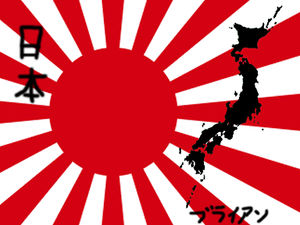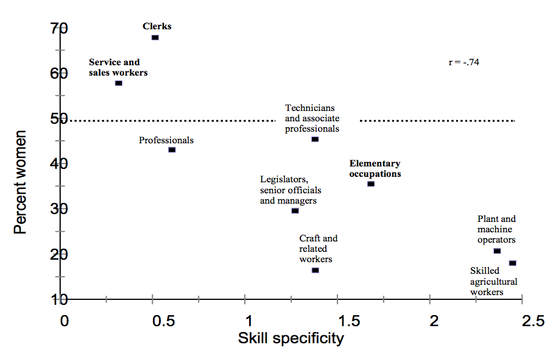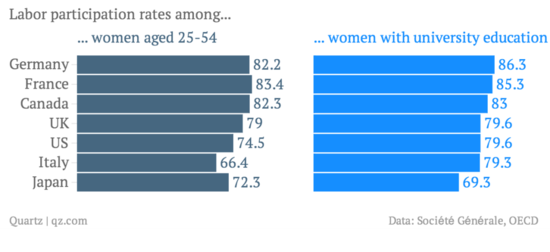OtakuBoys About Japan
| l | l | Home | o | About Japan | o | Japan vs Singapore | o | Hachimen Roppi | o | Freak Out | VA! |
|---|---|---|---|---|---|---|---|---|---|---|---|
Contents
- 1 Japan at a glance
- 2 A Brief History of Japan
- 3 Yamato Period (400 BC - 250 AD)
- 4 Early/Medieval Japan (710 - 1600)
- 5 Closed Country: The Tokugawa Period (710 - 1600)
- 6 Building a Modern Nation: The Meiji Period (1868 - 1912)
- 7 A Phoenix from the Ashes: Post world war 2 successes and beyond (1940s - 1980s)
- 8 A Superpower Adrift (1980s - 2011)
- 9 Conclusion
- 10 The Company Pattern
- 11 Company as a family
- 12 People Management
- 13 Working women in Japan
- 14 Technology Industry Traits
- 15 Technological Emulation
- 16 Techno-parochialism
- 17 Weird stuffs
- 18 Resources
Japan at a glance
- Population size: 127,650,000 (as of 2012 findings)
- High population density: 329.5 persons per square kilometer for total area
- Sex ratio of total population: 0.95 male to 1 female
- Ethnic group: 98.5% Japanese and 1.5% other
- Language: Linguistically homogenous - mainly speaking Japanese
- Religion: Shintō and Buddhism (main) Muslims and Christianity (minority)
- Industry: Science and technology in Japan is mostly focused and prominent in consumer electronics, robotics and the automotive industry.
A Brief History of Japan
Japan's impact on the modern world is enormous. Although it merely occupies less than 1/300 of the planet's land area, it wielded 1/6 of the world's planet's economic might at the peak of its economic growth in the 1980s. Till today it remains the 3rd ranking economy in the world, just behind The United States and China.
Its arrival in the world arena was nothing less than dramatic. From just spotting obscure land of paddy fields just a 150 years ago, it had rapidly grew to become a major contender among imperialist powers, a military threat to the world order and then becoming an economic superpower.
To understand the makings of this superpower, it is not just enough to examine its economic development. It is vital to consider the historical progress of the nation in broad terms. As such, we shall look at how Japan had become over the years, from the Yamato period till today, in the hope of getting some insights of key values and practices in the ancient period.
Yamato Period (400 BC - 250 AD)
Key features of this period
- Yayoi Immigration (large influx of sino-korean people to Japan)
- Establishment of Yamato imperial line
- Introduction and adoption of Buddhism
Key values and practices in this period
- Avoidence of moral judgements as to good or evil
- Pragmatic behaviour particularised to the situation rather than based on universal principals
- Incorporation of potential threat
- Adoption of the strong points of others
- Desire to make Japan a strong and respected nation
- Willingness to learn
- Preference of ranking and hierarchy
- Practical approach to religion - simply means following one religion in one context and another religion in another context.
Early/Medieval Japan (710 - 1600)
Key features of this period
- Warrior State - Provincial warriors take over real government
- Court "high culture" at its peak
- Japan survives Mongol attack
- Constant Civil War
- Europeans arrive
- Country unified under the warlords Oda Nobunaga and Toyotomi Hideyoshi
Key values and practices in this period
- Preference for the indirect approach
- Dominance of pragmatism over principle
- Diffusion of responsibility (For e.g punishment of the collective for the acts of an individual member)
- 'Japanisation' of imported ideas and practices
- Intermingling of old and new
- Ideals of austerity and discipline among warriors
- Self-interest rather than loyalty.
Closed Country: The Tokugawa Period (710 - 1600)
Key features of this period
- Government(Shogunate) is re-established
- Foreigners removed, Christianity surpressed
- Government's policies of control in place
- Role of Samurai changes to bureaucrat
- New boureois culture develops (puppet drama, popular romances, merchant success stores and sexually titillating books)
- Population levels off, economy prospers
- Education spreads
- Foreigners start to 'pester' again
- Rising public dissastifaction towards the government
- Foreigners return in force, country reopens, Japan humiliated
- Outer domain samurai challenge government
- Government toppled by coup, emperor restored.
Key values and practices in this period
- Widespread orthodoxy and conformism
- Widespread obedience- to authority, and the idea of "freedom within limits"
- 'morally relaxed' attitude towards sexuality
- collective responsibility and accountability, enforced by vigilance and harsh punishment
- cautiousness towards strangers, with strong in-group/ out-group consciousness
- sense of materialism among many non-samurai
- continuing view that life is relatively cheap
- high regard for education
- Revival of Japanised Confucianism
- Idealisation of the way of the samurai
- Strengthening sense of nationalism, with especially strong distinction betewen Japan and the rest of the world
- Eventual sense of humilliation by western powers
Building a Modern Nation: The Meiji Period (1868 - 1912)
Key features of this period
- Nationalisation of land and abolition of feudal classes
- Westerniation of society and economy
- Self-help ideology grows strong
- Ideas of 'freedom and human rights'
- Political parties formed
- Heavy industry develops, Japan becomes a processing nation
- Sino-Japanese war, Japan victorious
- Japan wins major revision of unequal treaties and recognition of western powers
- Anglo-Japan Alliance
- Russo-Japanese War, Japan effectively victorious
Key values and practices in this period
- Incorporation of the strengths of a potential threat
- Ability to mix old and new, native and foreign
- 'Japanisation' of many foreign elements
- distrust of socialism
A Phoenix from the Ashes: Post world war 2 successes and beyond (1940s - 1980s)
Key features of this period
- Rapid economic growth from industrialization.
- Third-largest economy in the world (after U.S ad Soviet Union)
- Largest producer of ships, second-largest producer of cars, third-largest producer of steel
- Under-developed public infrastructures, public angry over poor lifestyle and corruption
Key values and practices in this period
- Willingness to learn from superpowers
- Increasing adoption of western values towards human rights
- Preference for conservatism
- determination to succeed
A Superpower Adrift (1980s - 2011)
Key features of this period
- Recession from 1990s till 2009 (recovers in 2010)
- Loss of direction, elderly outnumbers the young.
- Attempts to restore national pride with change in history text
- Successful co-hosting with Korea for World Cup.
- Tohoku Earthquake, tsunami and radioactive leaks
Key values and practices in this period
- Loss of direction
- Increased adoption of western-style laws such as individual rights
- Increased freedom of choice
- Increased sense of playfulness among the young (creation of anime, manga, video games)
- Consumerism and commercialism
- Increase in internationalism/ globalisation
- Ongoing resilience in the face of disaster, despite anxiety.
Conclusion
The individualistic, profit-motivated entrepreneur had existed in the early Meiji period, probably existed in the 1920's (and certainly exists today) but he did not have the full approval of the community. Rise of familism (company as a family) is a more traditional employment method.
The Company Pattern
Company as a family
It is frequently said that Japanese companies are patterned on the family system. This is but a natural development out of Meiji and Taisho labor conditions.
History as an agricultural country
Japan was essentially an agricultural country with one major manufacturing industry: textiles. A great deal of the production in these industries took place in family workshops. Those establishments big enough and sufficiently well organized to be called factories rarely employed more than 30-40 workers, so that it was nearly always the case that employees and employers knew each other personally.
Idea of familism
The idea of familism, the epitome of Japanese uniqueness, arose with apparent naturalness out of the circumstances of that time in the Tokugawa era, where the metaphor of family was perfectly adapted to interpret employment practices forced on employers by the labor market. This is a powerfully persuasive doctrine, that was also consistent with one of the central political concepts of the Meiji period, a concept widely supposed to have remote historical antecedents: the Japanese nation itself was a gigantic family with the emperor at its head. This familism, or groupism, sometimes forces employees unreasonable commitment, which can be seen in overtime working, for example.
People Management
Everyone is in the union together
The Japanese enterprise union means that all employees, whether blue collar workers or white collar university graduates, are in the union together from the time they enter the company to their late thirties or early forties when they reach a certain class management level.
When a Japanese enters a company directly after school, he knows he is there for life. He doesn't have the option of leaving, finding an equally good job, and starting all over should he not handle his responsibilities or himself well. His fate becomes one and the same with his company's prosperity, and every contribution from the beginning reflects on his cash wages and future performance, the size of his lump-sum retirement allowance and most importantly, his job security.
Working women in Japan
Women in general tend to face discrimination in skilled jobs and are usually passed over for promotion, particularly at large company. At present, only 1.6% of executives (paywall) at publicly traded Japanese companies are women.
Technology Industry Traits
Technological Emulation
Japan is surrounded by strong contenders for technological 'emulation', or in simple-terms -mimicking or copying of technology, like China and Korea. These contenders have the potential to sooner or later erode the economy of a front-runner country like Japan, through the superb fits and finishes but low prices of emulated technological products.
Techno-parochialism
When there's technological emulation, it is normal to have techno-parochialism. Techno-parochialism breeds arrogance, in which Japan may view Korea and China as adversaries making frontal attacks on an international market of high technology, where Japan and United States reigned supreme. Japanese companies are quick to respond by blocking foreign applications for Japanese patents and denying foreign competitors access to technologies and markets over which Japanese industries kept control. This is bad because without these emulation of technologies, the hitherto technological leads are quickly eroded. In other words, potential sources of incremental innovation are lost.
Weird stuffs
Resources
- Wiki:Demographics of Japan
- Wiki:Science and Tech Industry of Japan
- K.Henshall (2012) A History of Japan, Palgrave Macmillan Publishing
- A singaporean's travelogue
- Rien T.Segers (2008) A New Japan For the Twenty-First Century
- Daniel I.Okimoto and Thomas P.Rohlen(1988) Inside the Japanese System. Readings on Contemporary Society and Political Economy



